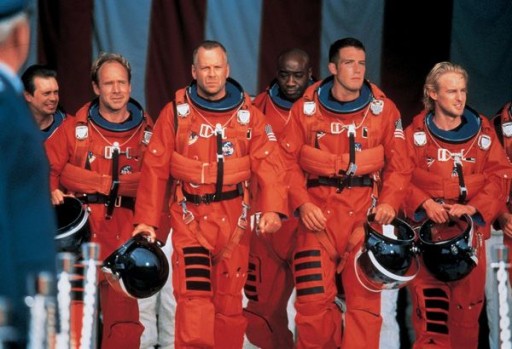You Should Be Playing…
Our Last Best Hope
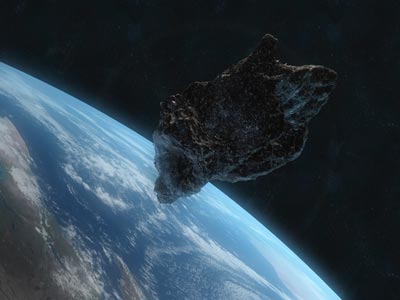
I told you I was innocent!
It was not an asteroid that killed the dinosaurs. The most powerful, dominant collection of species this world had ever seen fell not to some chance teleological disaster. No, the extinction of the dinosaurs was planned, calculated, and executed by a terrible, malign intelligence at the root of all life on Earth.
For sixty-five million years, the God Machine has slept, letting new species and new life creep back out into the world – species like humanity and our own terrible creations.
Now, the God Machine stirs in its slumber underneath the ice of Antarctica, disturbed by a team of scientists who went silent two weeks ago. It casts its baleful gaze out upon us, and it sees a world ripe for harvest. The only thing standing between it and an unaware humanity is the team of rescue operators sent out to Zulu Base 338.
Now, if only they had a way to deal with the zombies.
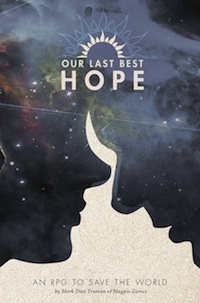 Our Last Best Hope is a roleplaying game about impossible odds and heroic sacrifices. Written by Mark Diaz Truman, it was published in 2012 by Magpie Games after a successful Kickstarter campaign. It now retails for $19.99 and can be purchase online through Indie Press Revolution and DriveThruRPG. An expansion book was also released in 2013 with three new adventures and a series of Game Hacks to add difficulty or interesting new elements to the base game.
Our Last Best Hope is a roleplaying game about impossible odds and heroic sacrifices. Written by Mark Diaz Truman, it was published in 2012 by Magpie Games after a successful Kickstarter campaign. It now retails for $19.99 and can be purchase online through Indie Press Revolution and DriveThruRPG. An expansion book was also released in 2013 with three new adventures and a series of Game Hacks to add difficulty or interesting new elements to the base game.
Additionally, there were free adventures planned for release in 2013 through the Magpie Games website, but none have been posted to date.
While Our Last Best Hope has been met with critical acclaim, it has surprisingly not been given any awards and flown under many people’s radar.
In Our Last Best Hope, three to five players form a team of experts in a desperate situation, with the survival of the human race at stake. Based on movies such as Armageddon, Sunshine, The Core, and Dawn of the Dead, Our Last Best Hope provides the means for the players to tell a story of great stakes, where impossible tasks can only be overcome through meaningful heroic sacrifice. Similar in many ways to Fiasco, Our Last Best Hope is designed to run without a single narrative director, or Game Master, and a complete game can easily be run in a single seating of two to three hours.
While the game itself is a little intensive on the use of note cards, easily needing over 30 through the course of a single game, it is fairly light in terms of additional requirements. Players only need a collection of six sided dice, sorted into two colors to denote positive (“white”) and negative (“black”) results, some markers, and a handful of tokens to play.
Gameplay
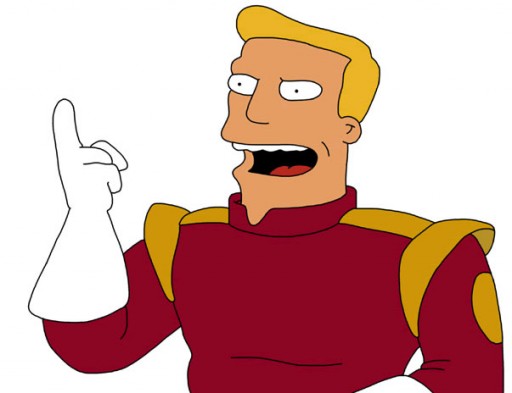
Choose your captain wisely…
Our Last Best Hope begins by determining the Crisis threatening the human race, the Limit that makes it immediate and unavoidable, and the Plan that gives the characters the means to avert certain disaster. Players choose among themselves a Captain to serve as the mission leader and the game facilitator, and a Supply Officer, who keeps stock of the various tokens, index cards, and dice the game requires. Once those roles are assigned and the major elements determined, players each create their own characters with a combination of Roles, Touchstones, and story elements.
The Roles in the base game are Doctor, Engineer, Soldier, and Scientist, each giving the player character a means to spend the game’s Story Point currency to help avert disaster. Each character also has two Touchstones, consisting of What They Brought With Them, and What They Left Behind. Story elements help define their relationships with the rest of the crew, consisting of one that makes them Sane, one who drives them Crazy, one terrible Fear, and one dark Secret. The Fear and Secret elements are handed to the players on the left and right of the PC, providing the other players control over how they are used.

Delicious Assets. Victory is oh so sweet.
Once the characters are created, each player takes a turn describing who they are playing and why they are there. Then players create a collection of Threats, which will complicate or endanger the Mission, and Assets, which give them an edge in overcoming the Crisis.
Finally, each character is given a Death card, giving them a terrible fate which can be revealed to cheat death early on and seal their fate in the end. With all these elements in play, written in bold marker on stacks of note cards for everyone to see and review, play begins with the Captain narrating a scene containing all the characters, announcing the Complication which forces the drama of the game.
The Complication threatens the Plan to save humanity and must be dealt with for the world to survive. Play progresses through two Acts, each with a series of spotlight scenes ending in a Threat needing to be overcome. The end of Act I confronts the Complication, and the end of Act II confronts the Crisis. At the end of each Act, the accumulated dice are rolled, with the total of the bad dice subtracted from the good dice. A positive result means success. A negative result spells disaster.
In each spotlight scene, players may cash in their element cards to earn Story Points. These Story Points are a currency used to activate Role powers, add good dice to an existing roll, or devote those good dice to preventing the Crisis at the end of the game. Story Points are also earned as bad dice move towards the Crisis, thereby making the end of the game harder. By confronting Threats, characters can earn the good dice and Story Points needed to win the game, but they also risk taking Harm. Take enough Harm, and a player must either reveal their Death card to cheat death or use their Death card to narrate an appropriate heroic sacrifice.
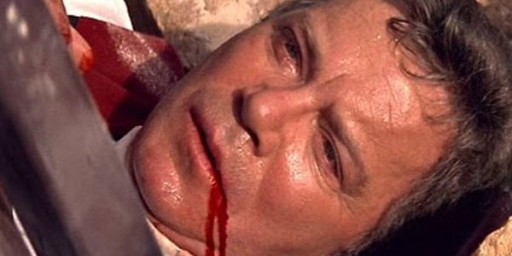
Appropriate heroic death scene…mostly.
Dying immediately resolves the Threat, adds good dice to the Crisis, and can grant Story Points. What’s more, even if a character is dead, they can still be the focus of a spotlight scene via a flashback, which in turn can earn Story Points for other players. Revealed but unresolved Death cards actually make the Crisis more powerful, adding bad dice to it. Because of this, players are encouraged especially in Act II to engineer appropriate, compelling death scenes for their characters, losing their lives to overcome impossible tasks and ultimately moving the team towards victory.
We Can Be Heroes
In many ways, Our Last Best Hope complements the new player-driven narrative school of RPGs developed in recent years. By removing the need for a GM and instead focusing on a single group play session, Our Last Best Hope fills a niche left by similar games. Fiasco allows players to enact their own Cohen Brothers style tale of ambition and disaster. The Play’s The Thing tells the story of a struggling troupe of Shakespearean actors attempting to stage one of the Bard’s masterpieces. Similarly, Our Last Best Hope focuses on telling stories firmly akin to summer blockbusters and disaster films. The base game comes with three adventures, providing first time players with a selection of Crises, Limits, and Plans for each scenario.
The Space Mission adventure draws on such inspiration as Deep Impact and Independence Day. The Zombie Apocalypse adventure references Night of the Living Dead and Zombieland. And the flexible survival-focused Snow Mission covers the styles of films like The Day After Tomorrow, The Thing, and even Snowpiercer. It takes a game of heroic sacrifices to truly capture the struggle in these stories, and it’s why they are so compelling.
Many other games allow players to see the end coming and make the final play that will leave them dead but the group better off, but no other game out there rewards such activity as strongly as Our Last Best Hope. Even Dread’s terrifying tower of Jenga (which can be played with a noble sacrifice to better the chances of the remaining group) does not provide the same gravity and dignity of a death as in Our Last Best Hope.
The Death cards included with the book are vague enough to fit nearly any kind of character and any kind of scenario. Each starts with “You will die…” and is completed with a separate phrase. Excellent examples are “…when you refuse to listen”, or “… to show you care.” By issuing the Death card at the very beginning, it primes the narrative and the player to seek a moment where their character can die like a hero. Even if they are only dying through exposure to a powerful Threat completely unrelated otherwise to the Crisis, that very death ups the stakes of the narrative and propels the surviving characters onwards toward victory.
From its first page onward Our Last Best Hope is an amazingly well put together game. It is firmly devoted to telling a dramatic story of players making heroic sacrifices against impossible odds in about as much time as it would take to watch a movie. Our Last Best Hope evokes the energy and themes of our tent-pole action blockbusters and disaster films, challenging us to imagine a world like our own where we can be the heroes. By incorporating the root of the hero – self-sacrifice – into the themes and mechanics from the very beginning, this game is not short of tense and monumental scenes. With its short play time, insightful evocation of our most popular stories, and the effective use of classic heroic tendencies, Our Last Best Hope stands out as game that creates powerful, compelling stories. It asks us to give our everything for the good of all, and from start to finish it relays to us that we too can be heroes.
And that is why you should be playing Our Last Best Hope.
David Gordon is a regular contributor to the site. A storyteller by trade and avowed tabletop veteran, he is always on the lookout for creative tabletop games. He can be reached at dave@cardboardrepublic.com.
You can discuss this article and more on our social media!
Photo Credits: Asteroid by How Stuff Works; Our Best Last Hope by Magpie Games; Armageddon by Touchstone Pictures; Zapp Brannigan of Futurama; Captain Kirk in Star Trek Generations Paramount Pictures; Choose Your Own Adventure books by Chooseco LLC

